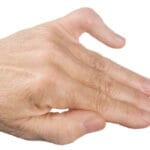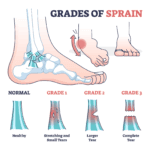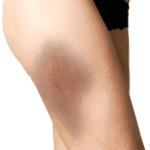Introduction
Arm injuries can significantly impact daily activities, from typing on a computer to lifting groceries. Selecting the right brace is crucial for promoting healing, reducing pain, and preventing further injury. This article provides a detailed overview of the different types of arm braces, their functions, how to choose the right one for your specific injury, and answers to common questions related to arm braces.
Types of Arm Braces and Their Functions
1. Wrist Braces
Types and Uses:
- Thumb Spica: Covers the thumb and wrist, ideal for thumb injuries such as sprains, fractures, and arthritis. It immobilizes the thumb while allowing other fingers to move freely.
- Wrist Wrap: A soft brace providing compression and support, useful for mild wrist pain, sprains, and strains. It can be used during activities that involve wrist motion, like typing or gardening.
- Wrist Sleeve: Offers compression and warmth, suitable for mild wrist pain and prevention during physical activities.
- Carpal Tunnel Brace: Designed to relieve pressure on the median nerve, primarily used for carpal tunnel syndrome. It restricts wrist movement to prevent further compression of the nerve.
- Night Wrist Brace: Used at night to prevent wrist flexion, which can worsen carpal tunnel syndrome symptoms.
Functions:
- Support: Stabilizes the wrist joint, reducing pain and swelling.
- Immobilization: Essential for fractures, dislocations, or severe injuries to maintain proper alignment.
- Compression: Helps reduce swelling and improve blood circulation.
- Warmth: Beneficial for conditions like arthritis by relaxing muscles and improving blood flow.
2. Elbow Braces
Types and Uses:
- Elbow Sleeves: Provide compression and warmth, used for mild pain and prevention during physical activities.
- Tennis Elbow Straps: Apply pressure to the forearm muscles to relieve pain from tennis elbow (lateral epicondylitis). They help distribute pressure away from the injured area.
- Hinged Elbow Braces: Offer stability and restrict motion, ideal for post-surgical recovery or severe injuries.
Functions:
- Support: Reduces pain and inflammation by stabilizing the elbow.
- Compression: Helps decrease swelling and improve circulation.
- Motion Restriction: Prevents further injury by limiting harmful movements.
3. Shoulder Braces
Types and Uses:
- Shoulder Immobilizers: Restrict all movement, used for severe injuries like fractures and post-surgical recovery.
- Shoulder Compression Braces: Provide gentle pressure and support, used to alleviate pain and reduce swelling.
- Shoulder Stabilizers: Offer support and limit excessive movement, ideal for moderate injuries or chronic conditions.
Functions:
- Immobilization: Essential for proper healing of severe injuries.
- Compression: Reduces swelling and inflammation, promoting better blood circulation.
- Stabilization: Limits excessive movement, providing support to weakened or unstable shoulders.
How to Choose the Right Brace for Your Arm Injury
Selecting the appropriate brace involves considering several factors to ensure it meets your needs effectively. Here are the key aspects to consider:
1. Type of Injury or Condition
Different types of braces are designed for specific injuries or conditions. For instance:
- For fractures or severe injuries, an immobilizing brace may be necessary.
- For conditions like carpal tunnel syndrome, a specific carpal tunnel brace would be more appropriate.
- For mild pain or prevention, a compression sleeve might suffice.
2. Function and Purpose
Understand what you need the brace to do:
- Support: For ongoing pain or mild injuries that need extra stability.
- Immobilization: For severe injuries or post-surgery recovery where movement needs to be restricted.
- Compression: For reducing swelling and providing gentle support during activities.
3. Fit and Comfort
A brace should fit well without being too tight or too loose. Here’s how to ensure a proper fit:
- Measure your arm, wrist, or elbow according to the manufacturer’s guidelines.
- Look for adjustable braces that can be tailored to fit your body.
- Ensure the brace is made of comfortable materials, especially if you’ll be wearing it for extended periods.
4. Material and Durability
Consider the material of the brace:
- Breathable Fabrics: Important for long-term wear to prevent skin irritation.
- Durability: Ensure the brace is sturdy enough to provide the necessary support over time.
Common Questions about Arm Braces
Q: Can I wear an arm brace all day? A: It depends on the type of brace and the severity of your injury. Some braces are designed for continuous wear, while others should be used intermittently. Always follow your doctor’s advice.
Q: How do I clean my arm brace? A: Most braces come with care instructions. Generally, you can hand wash them with mild soap and water. Avoid using harsh chemicals or machine washing unless specified by the manufacturer.
Q: Can I use an arm brace for prevention even if I’m not injured? A: Yes, using braces like wrist wraps or sleeves during activities that strain your arm can help prevent injuries.
Q: Will a brace alone heal my injury? A: Braces support healing by stabilizing the injured area, but they should be used in conjunction with other treatments such as physical therapy, medication, or rest.
Q: How tight should my brace be? A: The brace should be snug enough to provide support but not so tight that it restricts blood flow or causes discomfort. You should be able to fit a finger under the brace.
General Advice for Using Arm Braces
- Follow Medical Advice: Always consult with a healthcare professional to get a proper diagnosis and treatment plan tailored to your specific injury.
- Regular Monitoring: Keep an eye on your symptoms. If pain, swelling, or discomfort persists or worsens, seek medical attention.
- Proper Usage: Ensure you wear the brace as directed. Misuse can lead to further injury or impede healing.
- Complementary Therapies: Use braces in combination with other treatments like physical therapy, exercises, and medications for the best results.
Conclusion
Choosing the right brace for your arm injury involves understanding the type of injury, the specific functions of different braces, and ensuring a proper fit. By considering these factors and consulting with healthcare professionals, you can find the right brace to support your recovery and enhance your daily activities.





